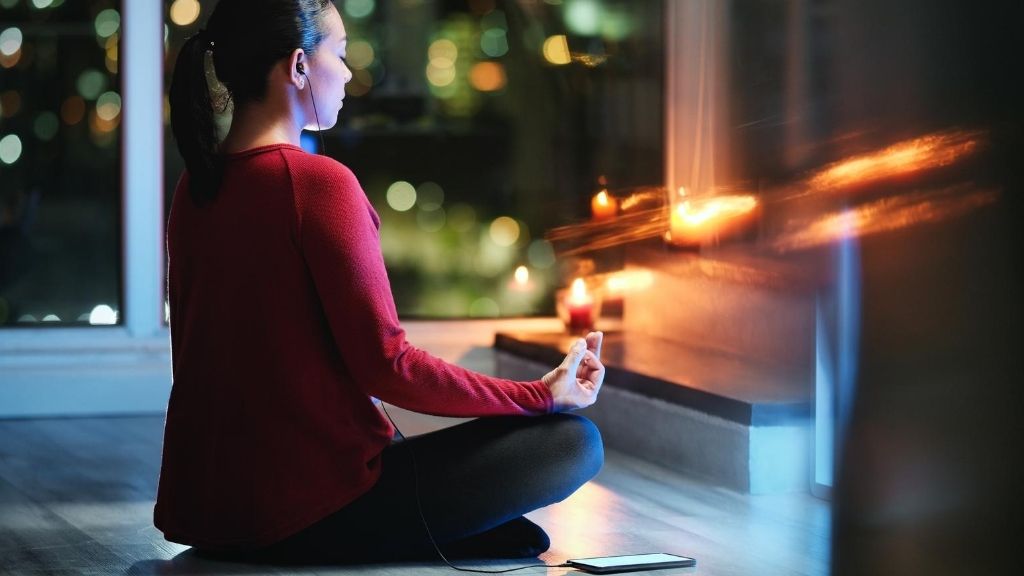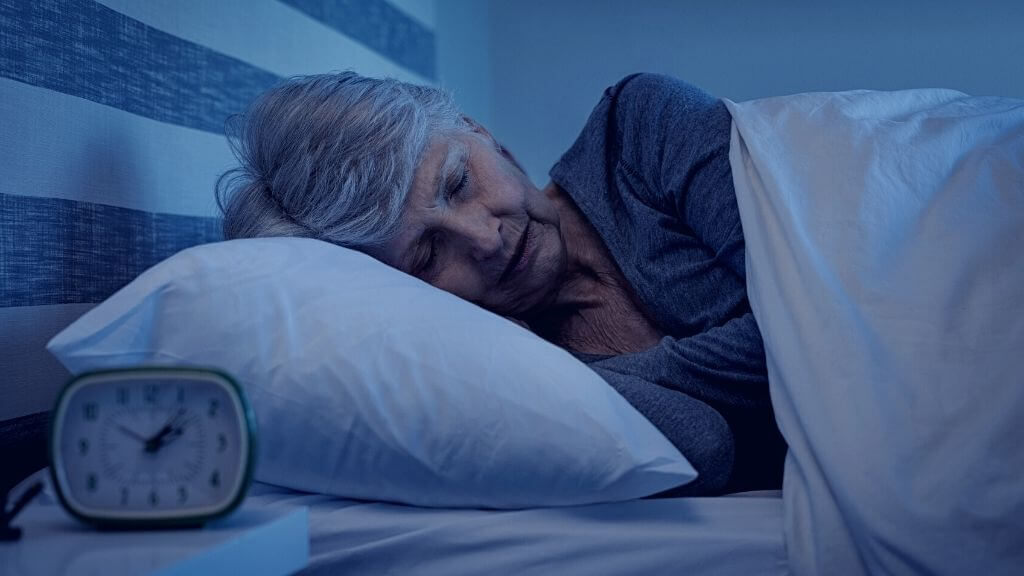Sleep Tips for Sleep Awareness Week
6 minute read
Not getting enough sleep is a serious and widely underestimated health issue. It is closely associated with weight gain, decreased concentration and productivity, increased risk of heart diseases and strokes, depression, and damaging emotional and social interactions.
The National Sleep Foundation founded Sleep Awareness Week to help people become educated about the necessity of healthy sleeping habits, and learn about how good sleep can improve health.
To support that effort, 1MD has compiled a list of effective sleeping tips to help you get the critical rest you need.
1. The 4-7-8 Breathing Exercise
A big part of getting good rest is learning how to reduce stress throughout the day and then especially right before bedtime.
This is a very easy technique that can be done anywhere. You don’t even need to get into position to do it, but we do recommend that you learn the technique sitting or lying down, and then move on to other positions.
Place the tip of your tongue right behind your upper front teeth, on the hard palate. Keep it there during the exercise—you’ll be mouth breathing around your tongue, so it takes a while to get used to the feeling.
Exhale through your mouth, making a whooshing sound. Now close your mouth and inhale quietly through your nose for four counts. Hold your breath and count to seven, Then, exhale for a count of eight. Each inhale and exhale, or set of 4-7-8, is a cycle. Try doing four cycles each time you do them.
This is a natural way to relax your entire body and your nervous system. As with all exercises, the more you practice, the more adept you’ll become at it. Meaning you’ll get more and more benefit every time you try.

2. The Art of the Nap
While researchers continue to look into the benefits of napping, they’ve discovered that there can be a downside to napping when your naps disrupt your nightly sleep cycles. To stay on the healthy side of things, make sure that your napping habits still support a healthy night’s sleep.
There are different kinds of naps and they can achieve different things, depending on how deeply you sleep in each stage. Because each person sleeps a little differently, they also move through the stages at a personalized speed. But this generalized categorization of naps can help you pick the right nap for your needs.
20-Minute Nap
This nap is targeted to improve energy and alertness. It gives you a couple minutes of hypnagogic sleep, the twilight stage right before you fall asleep. Then you dive into what is considered stage two sleep, which is a stage you pass through as you slip from one stage to another. It powers you up with a mental and physical rejuvenation.
35-Minute Nap
This longer nap also gives you the energy and alertness that you would get with a 20-minute nap, but the extra time adds a layer of mind clearing by taking you into the slow wave segment of sleep.
Slow wave sleep is when your body restores tissues while your brain discards useless information and enhances your conscious memory. The brain may even flush toxins during this sleep cycle.

60- to 75-Minute Nap
Once again, you’re getting all of the benefits of the prior nap, but this time you also add a creativity boost. Here you move from the slow wave sleep into REM sleep or the rapid eye movement phase.
During REM the brain is very active and is working on consolidating your memories, which can benefit learning, memory and mood. A lack of REM sleep can create physical and emotional repercussions.
90-Minute Nap
This is considered to be the perfect duration for a nap because it mimics your nightly sleep stages. You move from stages one to four, receiving almost as much benefit as you would from a full night’s sleep.
3. Serial Diverse Imaging, or SDI
SDI, or Serial Diverse Imaging, is a new technique in sleep science that appears to be helping more and more people fight sleep deprivation.
Here's how to try SDI at home:
Get into bed as usual, turning out the lights along the way and closing your eyes. Simply lie in bed and think of any emotionally neutral word that doesn’t repeat letters, e.g., holiday.
Thinking of a word with negative connotations, like “murder” can lead to heightened anxiety and cause the exact opposite effect intended. Back to the holiday example, you should next picture your favorite holiday for about 10 seconds.
At the end of the time, think of a new word starting with the same letter, in this case “h,” then repeat the process until you either fall asleep or can’t think of anymore words with the same letter, then switch to another letter.

Most people will typically feel sleepy during the first letter. But if you would rather have an automated way to get the same results, there is an app on the market that can help bring SDI to bedtime: mySleepButton.
Another way to do this is to think of an emotionally neutral word that holds at least five letters, then begin slowly spelling the word out in your head. For each letter of that word, think of another word that starts with that letter and imagine it.
Then repeat until, again, you have either fallen asleep or have grown tired of the word.
The Bottom Line
Having good sleep habits is one of the most important components of good health. If you have been suffering any of the symptoms of poor sleep patterns or lack of rest, try some of these tips and see if you can improve the way you feel every day.
Good luck, and have a good night's sleep!












